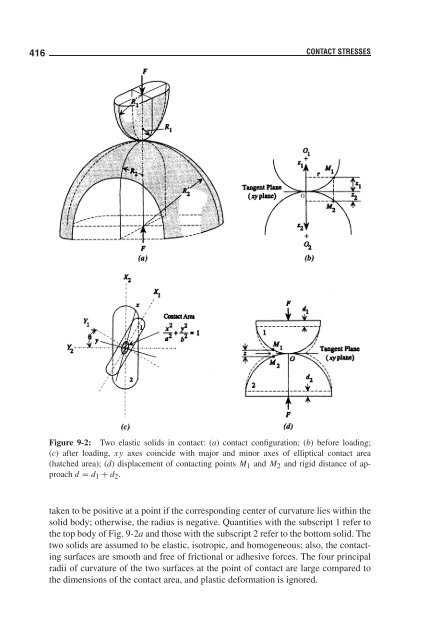9 Contact Stresses
9 Contact Stresses
9 Contact Stresses
You also want an ePaper? Increase the reach of your titles
YUMPU automatically turns print PDFs into web optimized ePapers that Google loves.
416<br />
CONTACT STRESSES<br />
Figure 9-2: Two elastic solids in contact: (a) contact configuration; (b) before loading;<br />
(c) after loading, xy axes coincide with major and minor axes of elliptical contact area<br />
(hatched area); (d) displacement of contacting points M1 and M2 and rigid distance of approach<br />
d = d1 + d2.<br />
taken to be positive at a point if the corresponding center of curvature lies within the<br />
solid body; otherwise, the radius is negative. Quantities with the subscript 1 refer to<br />
the top body of Fig. 9-2a and those with the subscript 2 refer to the bottom solid. The<br />
two solids are assumed to be elastic, isotropic, and homogeneous; also, the contacting<br />
surfaces are smooth and free of frictional or adhesive forces. The four principal<br />
radii of curvature of the two surfaces at the point of contact are large compared to<br />
the dimensions of the contact area, and plastic deformation is ignored.
















